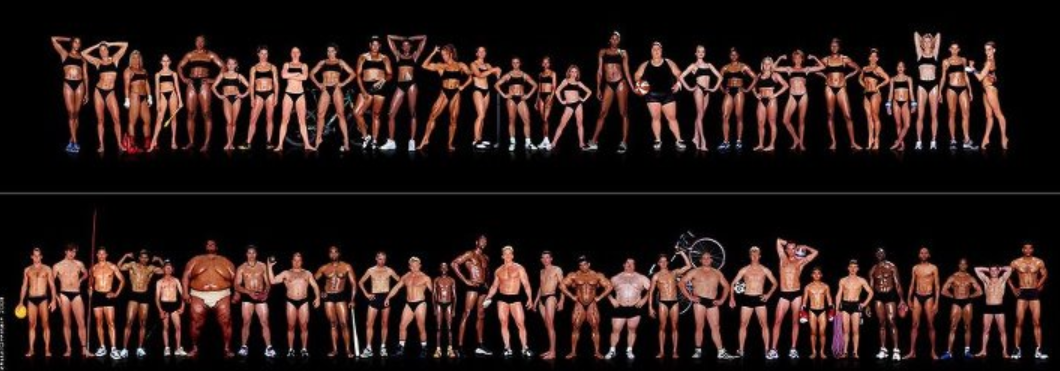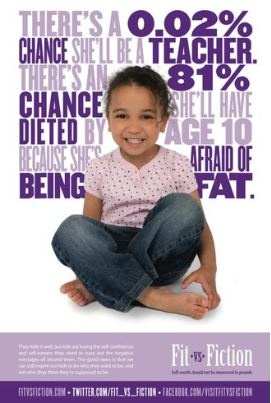Aug. 9, 2016 Rio! This post still applies tenfold in terms of word watching and body image critiques of Olympic athletes! Media Smarts has added some parenting talking tips for boys/girls too! Meanwhile, here are more relevant Rio updates on athletes and body image for 2016:
TeenVogue: US Olympic Swimmers Open Up About Body Image & Eating Disorders
Fast Co: When You Criticize A Female Athlete’s Looks, You Trivialize Her Achievements
CBC Sports: Don’t Let the Gold Medal Fool You, Even Olympic Athletes Struggle with Body Image
The Representation Project: #AskHerMore video and ongoing campaign tracking coverage of Olympic athletes
And finally, here’s a basic overview of “teachable moments” beyond body image/performance prowess that are watch worthy when co-viewing with kids throughout Rio 2016, from a media literacy standpoint and an ancillary NYT post that is particularly pertinent given Olympics “weight class” competitions.
Here’s to healthy journalism coverage, mindful conversations and global goodwill to all!
 Aug. 6, 2012 “She looks…big. I mean, not BIG big, but, well…chunky.”
Aug. 6, 2012 “She looks…big. I mean, not BIG big, but, well…chunky.”
Watching the Olympics with kids today tells a story in itself when comments tumble freely, and media fluff and stuff features focus on hair,tattoos, and body-snarking over pure performance.
In our appearance-based culture, ‘hottie’ credos have conscripted us to mass media with form over substance, where ‘reality TV’ raunch dominates…and if you don’t think children have been in that splash zone, listen to overheard comments from different families at public venues watching the Olympics together. Thankfully, the Olympic Games also provide a perfect platform for ‘teaching moments’ to flip that script ‘in real time.’
What better way to deep dive out of the shallow end with prime time inspiration on everything from character, sportsmanship and athletic feats to health and media literacy about body types, in their varied shapes and sizes?
While it’s hard to escape what’s become ‘normative’ in our appearance-based culture of sexualization (see Sociological Images great post on the photographic coverage of Olympic beach volleyball) it’s also important to spotlight the progress (e.g. it was great to see Olympic rules changed and comfort left to the players based on weather conditions)
This headline today, “Fat? We Are Fit. Get Over It Say Women Olympians” speaks directly to the body image media shift of London 2012. In fact, the ballyhoo over the ‘social Olympics’ in the digital age has created a noteworthy disruption, as athletes themselves make their voices heard on the world stage, which can bring a whole new meaning to ‘stick it.’
When the press made some body image slams about Australian swimmer Leisel Jones’ conditioning (accusing a ‘lack thereof) whammo, a “LayOffLeisel” Twitter hashtag was artfully coined by teammates respectfully airing their ire.
For me, that type of ‘upstanding’ action with supportive blowback and traction is paramount to change agents everywhere, and it’s heartening to see upstanding vs bystanding occur more frequently, with fast and effective results.
People rightfully (and sometimes righteously) call attention to missteps in media far beyond body image slurs too, from what’s wrong with the quantity and quality of event coverage based on gender,race, or nationalistic myopia using discerning critical thinking to convey that no two countries see the same Olympics unless they’re running in real time without commentary. Hallelujah! This is progress!
Media literacy like this not only prompts parents to uncork important conversations with kids on stereotypes and status quo, it also unleashes those quizzical, “Did they really just say that?” moments when announcers make an awkward ‘fill the airtime’ gaffe and ugly realities seep into the soup.
Those media literacy eye-lock moments exchanging incredulous ‘whaaa?’ expressions with a child are truly satisfying, knowing that a child indeed ‘gets it’ without having to utter a word.
Today’s interview is about handling the touchy times when they don’t, and turning them into ‘teachable moments.’
 This teacher/blogger at (visual credit at left) has a great little checklist of ideas to turn the Olympics into informal learning conversations.
This teacher/blogger at (visual credit at left) has a great little checklist of ideas to turn the Olympics into informal learning conversations.
Along these lines, we’ve added some body image specifics to tackle some of the tough stuff when positive family fun watching the Olympics turns into “whoa, I have work to do here.”
How do you redirect a conversation going sideways without giving it too much heat?
What would you say to a child who’s focusing on muscled athletes being ‘cut’ or ‘famous’ or ‘making a gazillion dollars?’
How do you counter-market ‘thinspiration?’ Do you address the irony of Olympic junk food ads in a society that pushes fat but promotes thin? How would you handle a snipe or sarcasm directed at this runner? Or this one? Is all the body image chatter making matters worse? What are some of the top 10 sports parenting myths to keep in mind when eager athletes emulate Olympians in wannabe style? With the spotlight on Olympic bodies, physiques, regimens, and competitive drive, the ‘pursuit of perfection’ can turn into a sidewinder if kids start to internalize that they’ll never ‘measure up’…
Today I’m interviewing Fit vs Fiction founder Marci Warhaft-Nadler, a certified fitness instructor and body image consultant, who has ‘seen it all’ (sometimes firsthand) to help give us a few tips on ‘what’s healthy and what just appears that way.’
Amy Jussel, Shaping Youth: Could you give us some talking points to reframe conversations when you hear ‘body-snarking’ or put-downs during the Olympics, or elsewhere? How do you redirect them into lasting ‘teaching moments’ using examples?
 Marci Warhaft-Nadler, Fit vs Fiction: Let your kids hear the negative, image based comments and then let them see your reaction to it. Simply hearing how you feel will get them to start thinking and questioning things for themselves.
Marci Warhaft-Nadler, Fit vs Fiction: Let your kids hear the negative, image based comments and then let them see your reaction to it. Simply hearing how you feel will get them to start thinking and questioning things for themselves.
Ask them what they think it takes to get an athlete to the level that these Olympians have achieved? How much of that is based on how they look? (probably none of it)
Talk about each of the sports that you’re watching and talk about how each body part has to WORK efficiently and belong to a body that is healthy in order to succeed.
Discuss how powerful the gymnasts legs are, how strong the rowers arms are…they are all part of a hard working body. Look up pictures of athletes from several different sports and talk about how different their bodies can be form each other and yet all are fabulous in their own way.
Amy Jussel, Shaping Youth: We saw some Olympic firsts with Kayla Harrison winning gold for USA in Judo and winning hearts with her advocacy. Do you find sports that require ‘weigh-ins’ have special body image concerns in terms of being extra aware there’s no slide into eating disorders?
How do you frame ‘weight class’ sports in a healthy way?
 Fit vs Fiction: My sons compete in the martial art of Taekwondo. My older son competes at a level where divisions are separated by age and weight and where official weigh-ins are required before national and international competitions.
Fit vs Fiction: My sons compete in the martial art of Taekwondo. My older son competes at a level where divisions are separated by age and weight and where official weigh-ins are required before national and international competitions.
As someone who does NOT believe in diets or even discussing weight with kids (it’s the parents job to provide their kids with healthy meals and lots of physical activity) I felt completely conflicted the first time my son had to “make weight.”
Basically, you register in a specific weight class weeks before and then need to stay at that weight until the day before the tournament. If you are the slightest bit over or under you may be disqualified. As a 13 year old boy, my son is growing every single day and knowing where he’d be a month in advance is almost impossible. I worried about the girls on his team and what impact weighing themselves under this pressure could be having on them. But here’s what I’ve learned:
Coaches are extremely important in cases like this. My son’s coach does not believe in impeding a child’s growth process in any way and wants his team to be as healthy as possible. He never encourages weight loss and would prefer his athletes let their bodies decide what division they belong in. There are times when a competition is coming up and an athletes weight may be getting close to the cut off and that’s when it’s time to make sure that the foods they’re eating are healthy, low in salt and preservatives (something we should all be doing anyway), in order to maintain the weight they’re at.
A very interesting thing I noticed about the girls, is that participating in this sport actually helped them appreciate their bodies for what they can do, instead of judge them for how they look. Understanding that they are fit and strong, it’s easy for them to see the number on the scale as just that; a NUMBER. They don’t personalize it or feel emotionally attached to it.
They know that the weigh-ins are purely for safety reasons. Believe me, you don’t want your child getting into a ring to spar against someone 20lbs heavier than they are. The problem so many of us have, is that we attach our entire self-worth to what we weigh but these young athletes KNOW that they are so much more than how they look are empowered more by their physical accomplishments than physical appearance.
Amy Jussel, Shaping Youth: Much has been discussed about ‘the obesity Olympics’ with unhealthy food advertising tied to sponsorships.
Do you think it muddies the water further when companies try to market their ‘better for you’ style options as ‘healthier’ such as the ‘under 400 calories’ McDonalds ad? How do you convey the different bodies/different needs issues to kids?
Fit vs Fiction: Teach kids to ‘follow the money’ and explain that while athletes are not actors, they can earn millions of dollars through endorsement deals, which is why we may see some promoting fast food or soft drinks (whether they consume them or not) because it helps them financially.
It’s also important to note that even if some athletes do eat foods that seem “unhealthy” in portion sizes that seem extreme (M. Phelps), we can’t compare ourselves to them because professional athletes live and train differently from the rest of us. Because they are constantly pushing their body to the limit, their bodies continue to burn calories even while at rest. They need to fuel their bodies in a way that helps them achieve what they need to. We’re the same way. We need to eat in a way that will help us achieve our goals as well. Our goals should be to be healthy, happy, strong and full of energy. We can do that by listening to our bodies, eating when hungry, stopping when full. Nourishing ourselves with foods that keep our bodies working efficiently.
(Amy’s note: some gems of examples when swimmer Ryan Lochte switched from junk food to whole food fuel in the link above. Also see CSPI’s Olympics Junk Food Fail to impart health literacy and USAToday’s “eat like an athlete when you watch the Olympics” for alt ideas)
Amy Jussel, Shaping Youth: Describe the unique challenge of sports that require athletes to ‘look good AND perform well’ from a spectator sports perspective (like gymnastics, beach VB, or ice dancing/skating etc) How can we impart ways to separate the skill sets from the ‘hottie factor’ and teach youth about sexploitation in merchandising? (how/why certain ‘poses’ become pay for play, how to separate fit vs fiction with Photoshop/contractual empowerment etc)
Fit vs Fiction: Olympic Gymnast Shawn Johnson recently spoke out about the fact that there is a lot of pressure put on gymnasts to look more like ballerinas than athletes. She feels that judges prefer lithe, long bodies which they consider “artistic” than her own body type, which is more stocky.
Even at the 2008 Olympics in Bejing, where she won four medals, including one gold, she can remember standing on the podium feeling like she could be a few pounds lighter. The National Institute of Health (NIH) states: The prevalence of EDs is higher in athletes than in other controls, higher in female athletes than male athletes, and more common among those competing in leanness dependent and weight dependent sports than other sports.
 There’s no doubt for sports like gymnastics and figure skating, there is considerable pressure put on how athletes look; it’s a sad fact.
There’s no doubt for sports like gymnastics and figure skating, there is considerable pressure put on how athletes look; it’s a sad fact.
We can try to explain to kids that elite athletes are not like the rest of us in that they spend almost ALL of their time training in their sport. They miss out on things like hanging out with their friends, going to parties and spending time with their families. They also have to eat differently; with the glory of being an athlete comes a lot of sacrifice, and many of these athletes eat in a way that is not a whole lot of fun. While they seem very healthy, there are some negative side effects that come along with extremes (in exercise, in diet) like loss of menstrual cycle.
Most of all, it’s important to note that how someone looks doesn’t always give us an accurate idea of how fit they are.
As part of my Fit vs Fiction workshops, I show the students pictures of several male bodybuilders. I ask the kids to name two things they think they have in common with each other. Since all of the men in pictures are VERY muscular, I often hear words like” Strong and masculine” called out. Then I go through the pictures again and reveal that not only have each of the men won competitive body building championships, but each and everyone of them was dead.
They had each died much too young as a result of trying to “look” so strong. It became more important to them to look strong and healthy than to actually BE strong and healthy and became willing to put themselves on extreme diet and workout regiments that were destroying their bodies.
I can speak from personal experience on this since about 8 years ago, I decided to try bodybuiding. I can tell you that while my body was as thin, toned and muscular as I ever could have wanted. I also had never been so hungry, tired and miserable in my life. I too fell into the trap of caring more about the appearance of being fit than the reality of it. I’m glad I did it, because now when I look at the pictures of fitness models in magazines, I KNOW what it takes to look the way they look and would never put myself through that again.
We often forget that athletes are HUMAN BEINGS and not machines. They need food and rest like the rest of us. We expect them to be superhuman and as a result, they often feel trememndous pressure to not let anyone down and this can lead them to push their bodies beyond their healthy limit. Kids need to understand the importance of respecting and appreciating their bodies and need to take care of them so they can continue to grow the way they should.
As far as advertising goes: We live in a superficial world where money speaks volumes. We can’t excuse marketers for choosing “hot” athletes to sell their products, but we can teach our children media literacy; to raise the bar and educate people on the amazing skill and accomplishments of ALL types of athletes. We can also show and tell how marketers choose to take the low road and feed into it by using “sexy” ads to sell their products. It’s silly and we won’t fall for it, but it won’t keep them for doing it. All we can do is help our kids see things differently.
(Amy’s note: For an excellent documentary to reach and teach about the merchandising of female athletes, check out Media Education Foundation’s “Playing Unfair” where media literacy meets sexploitation with visual insight)
Amy Jussel, Shaping Youth: Thanks for your time, Marci, I love the posters you’ve created at Fit vs Fiction, they’re poignant and speak volumes. When it comes to the physical AND mental games of elite athletes and the wee bit of ‘aspirational wannabe’ in us all, it seems like your over-arching message is ultimately…’check yourself. ‘ (motivations, internal and external driving forces etc) Any parting words about sports or body image or being physically active that you’d like to share?
Fit vs Fiction: I’ve covered a lot of body image workshop tips in this series and my book is due out in January, called “The Body Image Survival Guide for Parents: Helping Toddlers, Tweens and Teens Thrive.”
I think it’s really important that parents understand that body image issues aren’t just a “teen girl” thing anymore and that girls and boys as young as 5 years old are struggling. The negative messages from the media and society will be loud, but that just means that our voices as parents need to be even LOUDER. Keep the conversation going. Surround yourself and your children with images created to inspire. Make your house FAT-TALK FREE and make sure that everyone who visits respects that rule.
In my book I talk about the advantages as well as the dangers of being involved in sports.As parents, our number one priority is to make sure our kids are well taken care of, physically and emotionally.
We need to remember that a child, even one who is dedicated to a sport they love, needs to be a child. It’s important that they feel comfortable telling you if they need a break. The last thing we want is for our kids to feel that they’d be disappointing US if they needed extra rest or social time with their friends to meet some ‘elite athlete’ vision. Keep the lines of communication OPEN.
Make sure the coaches involved understand that your child is a child FIRST and an athlete second and that their well-being is your number one priority and you expect them to respect that.
“Too many kids are afraid to participate in a sporting activity because they worry they won’t be good enough. We happen to live in a society where winning is everything and second place is considered “first loser” and I think that’s very sad. We need to remember that sports are supposed to be fun, win, lose or draw.”—Marci Warhaft-Nadler, Fit vs Fiction
Visual Credits: Lead Poster from “Anatomy in Motion” on Facebook, Leisel Jones + medalists, by Steve Christo as shown above; Kayla Harrison: Kim Kyung-Hoon/Reuters-Time, Inc.









Hi Amy,
Footage like this, yes it’s legitimate footage from NBC, doesn’t help, does it? http://jezebel.com/5933302/someone-at-nbc-apparently-approved-this-creepy-porny-video-of-female-olympians
My kids love athletics. I have a little boy who admires Bolt and says that he wants to be just like him. He even practices intense running. I have an older girl too but she says she would prefer to be in a relay.
Ah, here’s another one http://thesocietypages.org/socimages/2012/08/02/photographic-coverage-of-olympic-beach-volleyball/
Thanks, Kris…yah, that one was def on my radar. Am working on a post-Olympics post about the merchandising of athletes so give me a heads up if you see any press on same, ok?